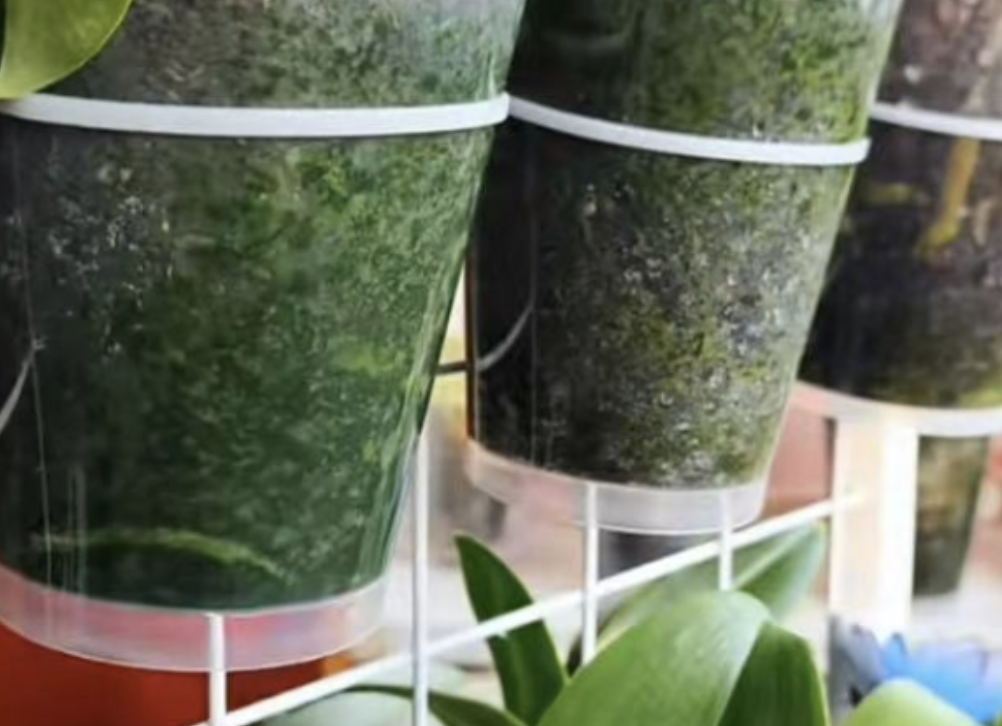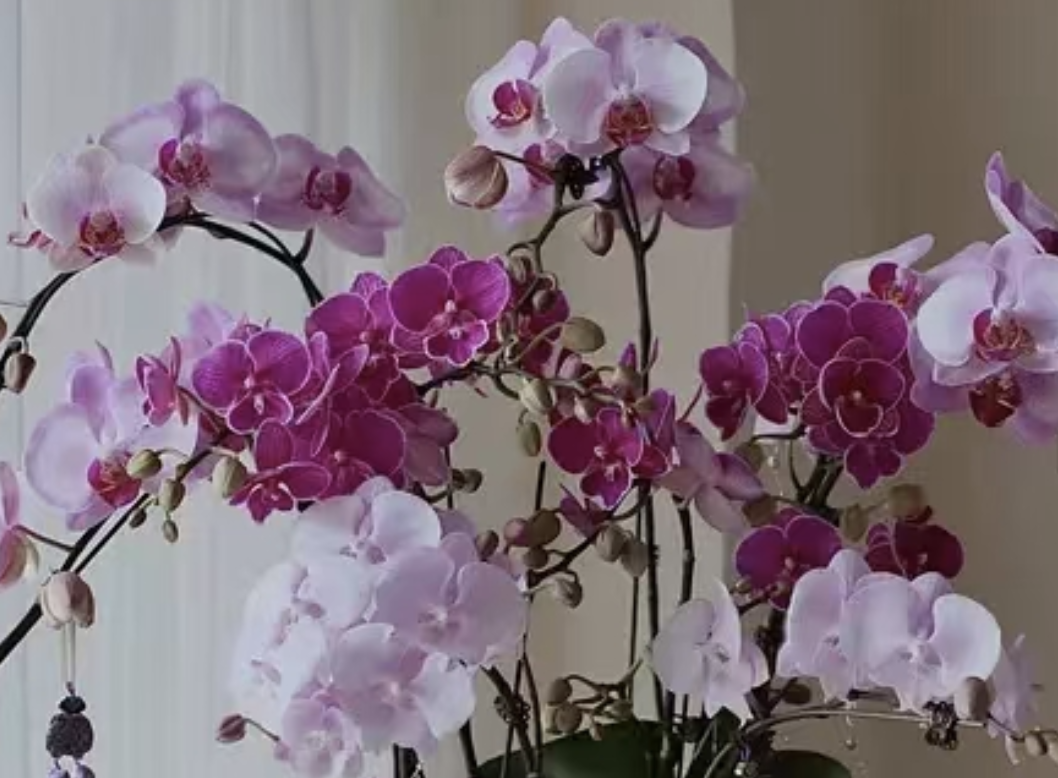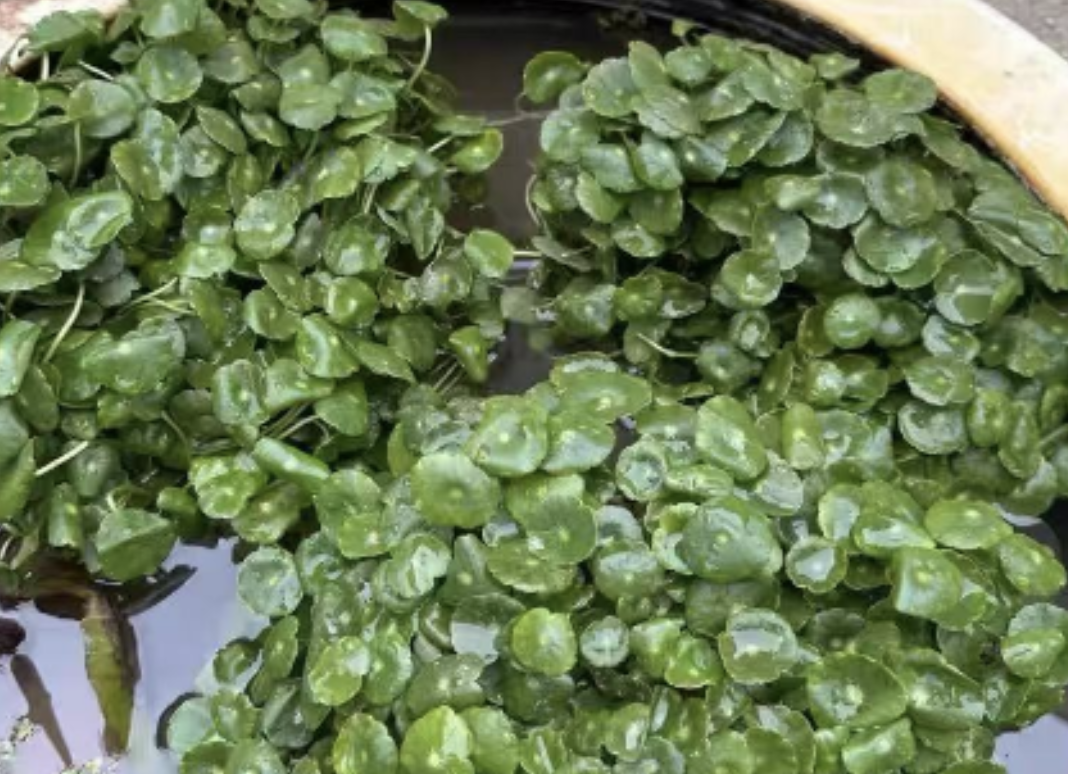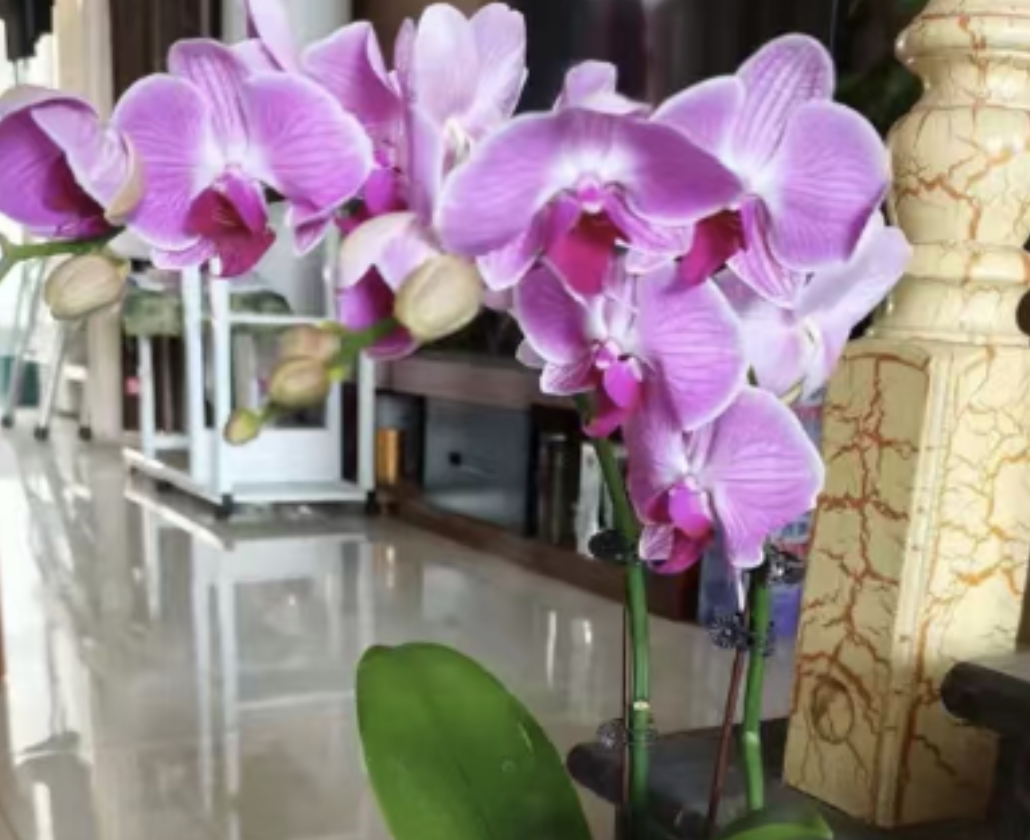"I've been carefully taking care of my orchid, just changed to sphagnum moss, but why has moss appeared after just a few days? Has the sphagnum moss gone bad?" Sphagnum moss and moss are two completely different things, with different uses and impacts on orchids.

Sphagnum moss is a great companion for growing orchids. The moss we buy is dry, and after soaking, it becomes soft, light green or yellowish-brown, and sponge-like. It has excellent water retention and moisture-holding properties. It is harvested, processed, and dried for use as orchid growing medium, helping to anchor the orchid roots and slowly release moisture, keeping the air roots "moist but not soggy." It's also breathable, allowing the roots to "breathe" comfortably. When we repot, we wrap the sphagnum moss around the orchid roots or spread it on the surface of the pot, using it to help the orchid "drink" without suffocating the roots.
As for moss, it’s usually an "uninvited guest" that grows by itself. It’s typically bright green, forming a thin layer on the surface or walls of the pot, sometimes creeping into the gaps in the sphagnum moss. It feels slippery to the touch. Moss isn’t a medium we intentionally use; it appears when the environment is too humid and lacks enough light. The spores from the air land on the surface of the pot and slowly proliferate. Simply put, sphagnum moss is "invited to help," while moss is "self-invited"—they are fundamentally different, so don’t confuse them.
So, does the presence of moss in the pot affect the orchid? Don't panic, moss itself doesn’t harm the orchid. It doesn’t feed on the orchid roots or steal nutrients, but if left unchecked, it can cause problems.
The first issue is the difficulty in judging when to water. When growing orchids, we usually check the surface of the sphagnum moss—when it turns white or feels dry to the touch, it’s time to water. But with moss covering the surface, it becomes hard to tell if the sphagnum moss underneath is dry or wet. This could lead to either underwatering, causing the roots to dry up and shrivel, or overwatering, when the moss makes the roots stay too wet, leading to root rot over time.
The second issue is the impact on airflow. Moss acts like a small plastic film over the surface of the pot, blocking air circulation. The moisture in the growing medium can’t escape, causing the sphagnum moss or bark to become moldy. Orchid air roots need good airflow, and if they are trapped in a damp, non-breathable environment, they can quickly turn brown and rot.
If moss has already grown, what should be done? If it's just a few small patches, gently remove them with tweezers, being careful not to damage the nearby air roots. After removing the moss, move the pot to a place where it gets indirect light, like by a window, and let it get 2-3 hours of sunlight daily. The light will help suppress the growth of moss. Also, adjust watering—water only when the top 2 cm of the growing medium has dried, and after watering, empty the tray of excess water so that the pot doesn’t sit in standing water.
If the moss has covered the entire surface or even infiltrated the growing medium, it’s time to repot. Gently remove the orchid from the pot, shake off the old sphagnum moss, and rinse the roots with clean water. Check for any rotten roots (which will be brown and mushy). If you find any, trim them with sterilized scissors, soak the remaining healthy roots in a fungicide solution for 10 minutes, let them dry, and then repot with fresh sphagnum moss. Don’t pack the new moss too tightly, leaving some space for airflow.
When caring for orchids, choose high-quality, orchid-specific sphagnum moss, and deal with moss in a timely manner. Provide good ventilation, water less, and avoid a too-humid environment, so the orchids will thrive and bloom abundantly!




Leave a Reply